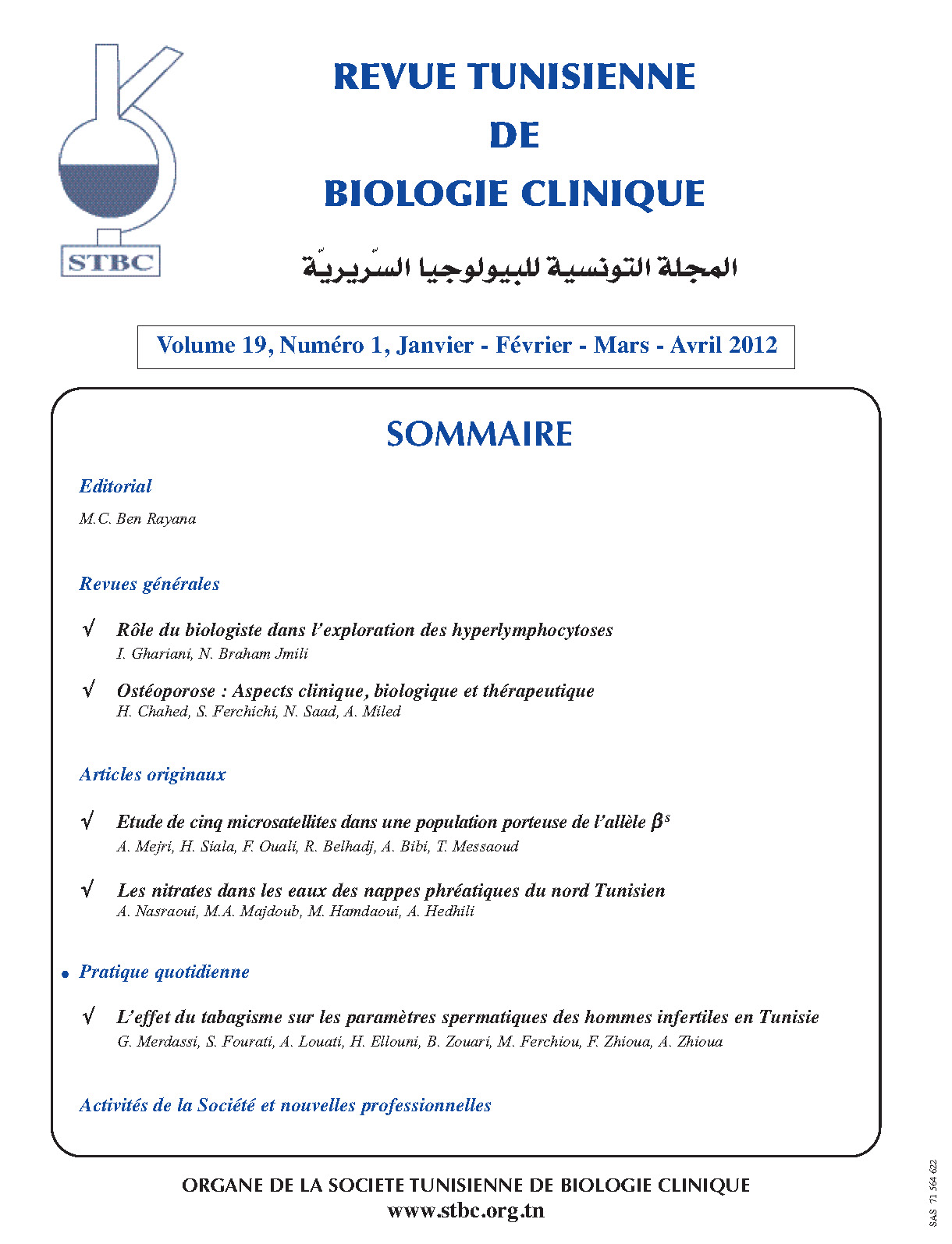Abstract
Blood lymphocytosis is defined by a rate greater than 4000 cells /mm3 in adults and 8,000 /mm3 in children. This lymphocytosis maybe due to diverse causes : reactive (secondary to infection) or malignant (chronic lymphoproli-ferative disorder). Lymphocytosis is revealed by blood analysis prescribed at the existence of adenopathies, clinical signs of bone marrow failure, in preoperatively situations or during a systematic review. Morphological analysis of lymphocytes is fundamental in the diagnosis of hyperlymphocyto-sis, it provides guidance on diagnosis, indicates the further useful investiga-tions and above all, it is necessary for the interpretation of immunophenoty-ping and other tests. The immonophénotyping by flow cytometry is necessa-ry to the diagnosis of lymphocytosis. It confirms the presence of a chronic lymphoproliferative disease and to classify it accurately.

This work is licensed under a Creative Commons Attribution 4.0 International License.
Copyright (c) 2012 Revue Tunisienne de BIOLOGIE CLINIQUE

